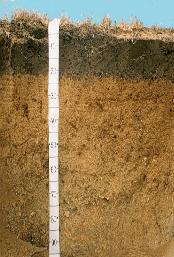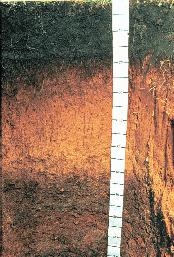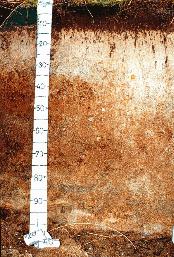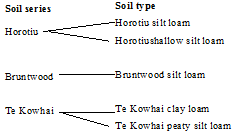

Soils are generally named after the locality or place where they were first discovered.
The name of a soil usually corresponds to the subgroup level.
Te Kowhai soils (or more formally the Te Kowhai series), were first found in the vicinity of Te Kowhai, a settlement north-west of Hamilton.
Soils such as Te Kowhai have all formed from the same parent material, are similar in appearance and have the same soil water and soil temperature regimes.
Soils of similar appearance occurring within an area that has a different climatic regime will invariably not be given the same name.
A soil series, therefore, implies its composite soils share not only very similar soil characteristics but also very similar climatic features.
Each soil series is made up of soil types, the lowest naming level.
Soil types have the narrowest ranges of characteristics, with relatively uniform morphology, chemical, physical, climatic and slope features.
The soil type may be subdivided into phases if further distinctions are necessary.
Sometimes a soil variant is identified - this indicates that there is enough dissimilarity to justify the identification of a new series but, because of the soil's limited distribution, creation of a new series is not yet justified.



:: name usually corresponds to the subgroup level of classification ::